
You are here
Foster Cat Journal: Good Kittizenship
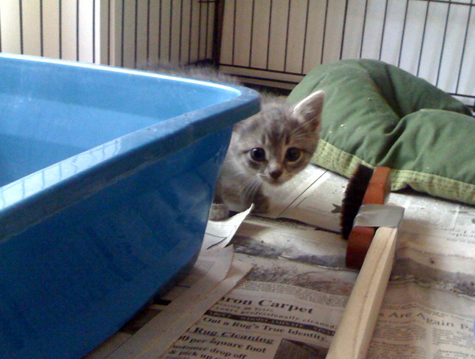
I didn't know we'd make it. Candy was one of the nastiest kittens I've dealt with so far. He still has a knee-jerk reaction to hiss, but it doesn't mean anything now. It's like a person gasping when startled, instead of a person flipping out and punching you in the face when startled.
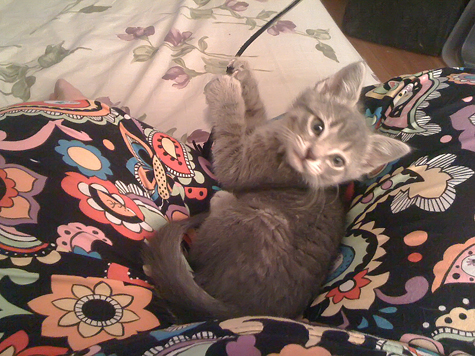
Candy, 8 days ago.
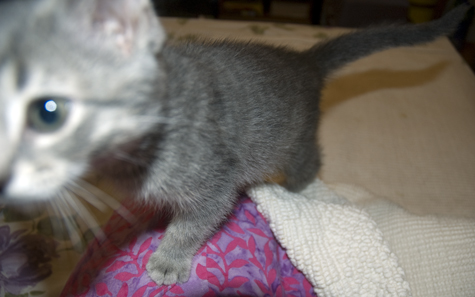
Candy, today.
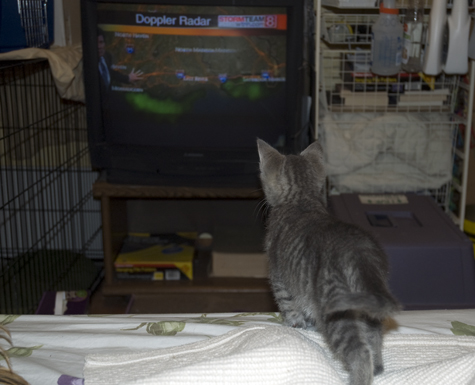
Someone liked to watch the weather report with me. I'm not sayin' who.
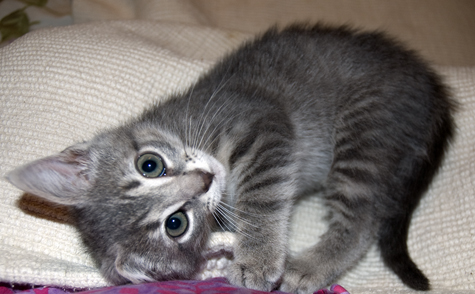
Happy, at last and loving life.
I'm by no means a professional feral kitten socializer, but here are some thoughts/tips:
Most important-“tough love”...sequester the kitten away from all animals and people. You will be the only one he/she sees for the next few days, until he/she is socialized.
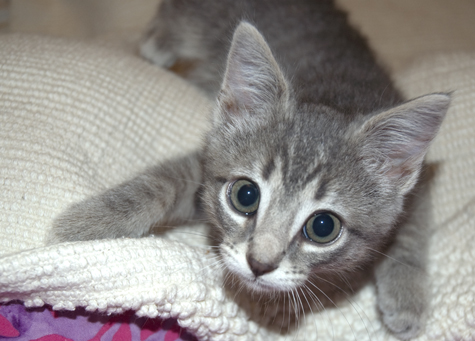
A little shy for a moment or two? Don't worry, Candy!
1. GO SLOW. Don't expect too much and don't talk a lot to the kitten at first, it's just another thing that can cause a fearful reaction. If you do talk, keep it to a whisper. Don't move too much or too fast until you feel the kitten is comfortable with you.
2. The toothbrush was the key (I attached it to a wooden stick to make it longer-keeping my hand safe and allowed the kitten to stay at a comfortable distance). It's small, not threatening and it really made a big difference. Candy loved the feeling of being brushed even if, at first, it scared him. Within a short period of time, I encouraged Candy to come closer to me to get brushed, then snuck my hand in to replace the brush. He got scared, but quickly loved being petted, as it reminding him of the touch of his mama.
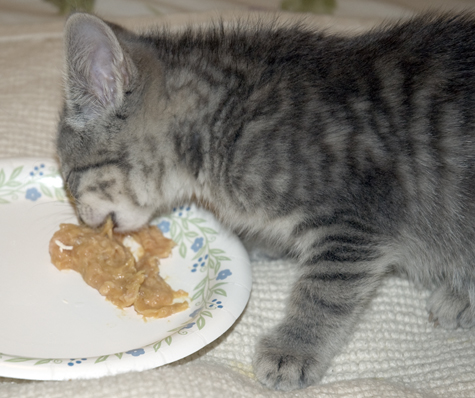
Candy LOVED eating raw (today's meal included some dehydrated chicken treats crumbled on top).
3. I gave high value treats off a baby spoon (again, a tiny sized item that is not threatening) attached to a longer wooden spoon. A raw diet is a high value treat. I used ground raw rabbit (sorry!). You can use ground turkey, chicken, duck, quail, venison, not beef. Make sure the meat also has the proper nutrients added. There are many pre-mixed brands of raw food out there.
4. Chicken baby food with no rice is also a good treat. Encourage the kitten to come closer to you as you feed the treat. Also, KEEP THE KITTEN HUNGRY. Don't leave out tons of food. When you bring the treat, the kitten will start to come out to see you, knowing there will be food. Always have good food on you the first few days until the kitten is more confident.
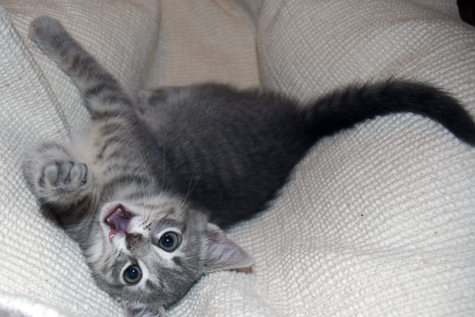
Silly boy!
5. With Candy, I began to realize he was all bark and no bite. His hissing was a sign of fear, but after a few days, there was aggression. As much as I could, I didn't react when he hissed, I either distracted him with a toy, or petted him until he forgot to be hissy. Once he was getting petted, he was so happy, he would not hiss.
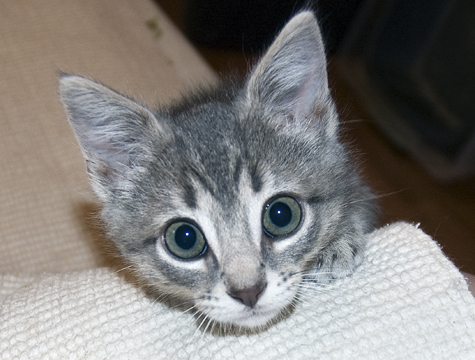
6. Have no expectation of outcome. Just let the kitten go at his/her own pace. You'll be surprised at how fast they move along-far faster than you expect!
I hope these informal pointers help you with your feral fosters. Cats CAN change if you give them the time and are patient, but also know when to give them a push to challenge them on to the next step.
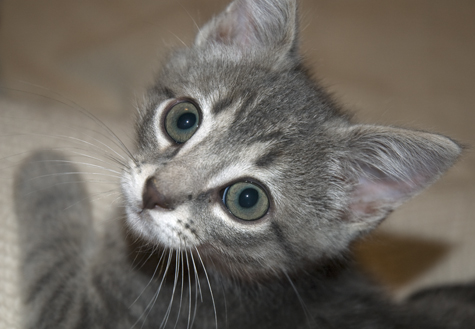
I hereby award you, little Candytuft, the first ever, Good Kittizenship Award, given only to feral kitties who meet the following criteria listed below.
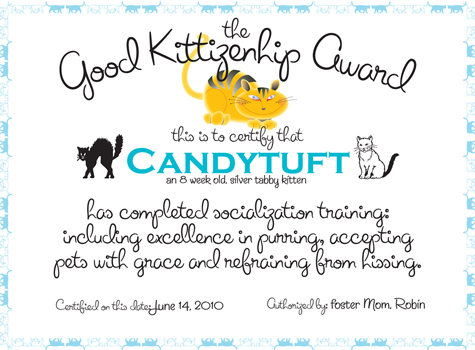
Concatulations Candy! You've become a very friendly little man. I hope you'll find yourself a happy home, full of love and you never have a sad or difficult day for the rest of your life.


















Add new comment